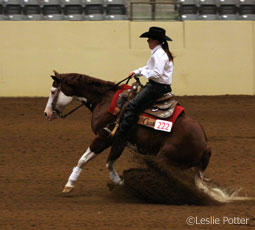 Owners of aging equine athletes are often familiar with joint injections. A lifetime of wear and tear on a horse’s legs can lead to degenerative joint disease (typically referred to as arthritis). Simple care and a sensible work schedule will do a lot to keep a horse sound, but in some cases, owners may turn to joint injections to help keep their horse moving comfortably.
Owners of aging equine athletes are often familiar with joint injections. A lifetime of wear and tear on a horse’s legs can lead to degenerative joint disease (typically referred to as arthritis). Simple care and a sensible work schedule will do a lot to keep a horse sound, but in some cases, owners may turn to joint injections to help keep their horse moving comfortably.
The researchers examined 9,456 records of injections in a population of 1,732 horses. A variety of different types of substances were used in the cases reviewed for the study, including corticosteroids, antibiotics, and polysulphated glycosaminoglycans (PSGAGs) which are used in horses with arthritis symptoms. They cross-referenced these records against reports of signs of joint infection within eight weeks following the injections. Horses that had symptoms were considered to have post medication complication (PMC). If those symptoms didn’t resolve with conservative treatment, the researchers classified the case as post medication synovial sepsis (PMSS).
Out of all of the records studied, only 12 horses developed PMC and only four had the more serious PMSS. The researchers note that all four of the horses considered to have suffered PMSS recovered and returned to use after treatment with joint lavage, or washing of the joint space.
Although the number of infections was low for the number of cases reviewed, administration of PSGAGs was found to be significantly associated with PMSS. However, when the injection also included antibiotic, the association was decreased.
Provided the injections are performed correctly by a skilled veterinarian, the risk of infection is negligible and shouldn’t deter horse owners from having them done if their veterinarian recommends it. The researchers did state that PSGAGs should always be administered with appropriate antibiotics to avoid unnecessary risks.
Further Reading
Question of the Week: Keeping Joints Healthy
Equine Joint Health Glossary
Joint Injections for Horses
Smith, L., Palmer, L., Shepherd, M., Steven, W.N., Dallas, R., Baldwin, G., Sommerville, G., Hawthorne, T. and Ramzan, P. (2013), Risks of Synovial Sepsis Following Intrasynovial Medication in Ambulatory Practice, 2006–2011: 9456 Intrasynovial Injections. Equine Veterinary Journal, 45: 6. doi: 10.1111/evj.12145_13






Lots of good information in the article. Makes me wonder if the risk are worth the pain and trouble for those top horses.
interesting
hey i bet thats a Gunner horse in the pic!
I can just imagine what those sliding stops do to joints.
cool